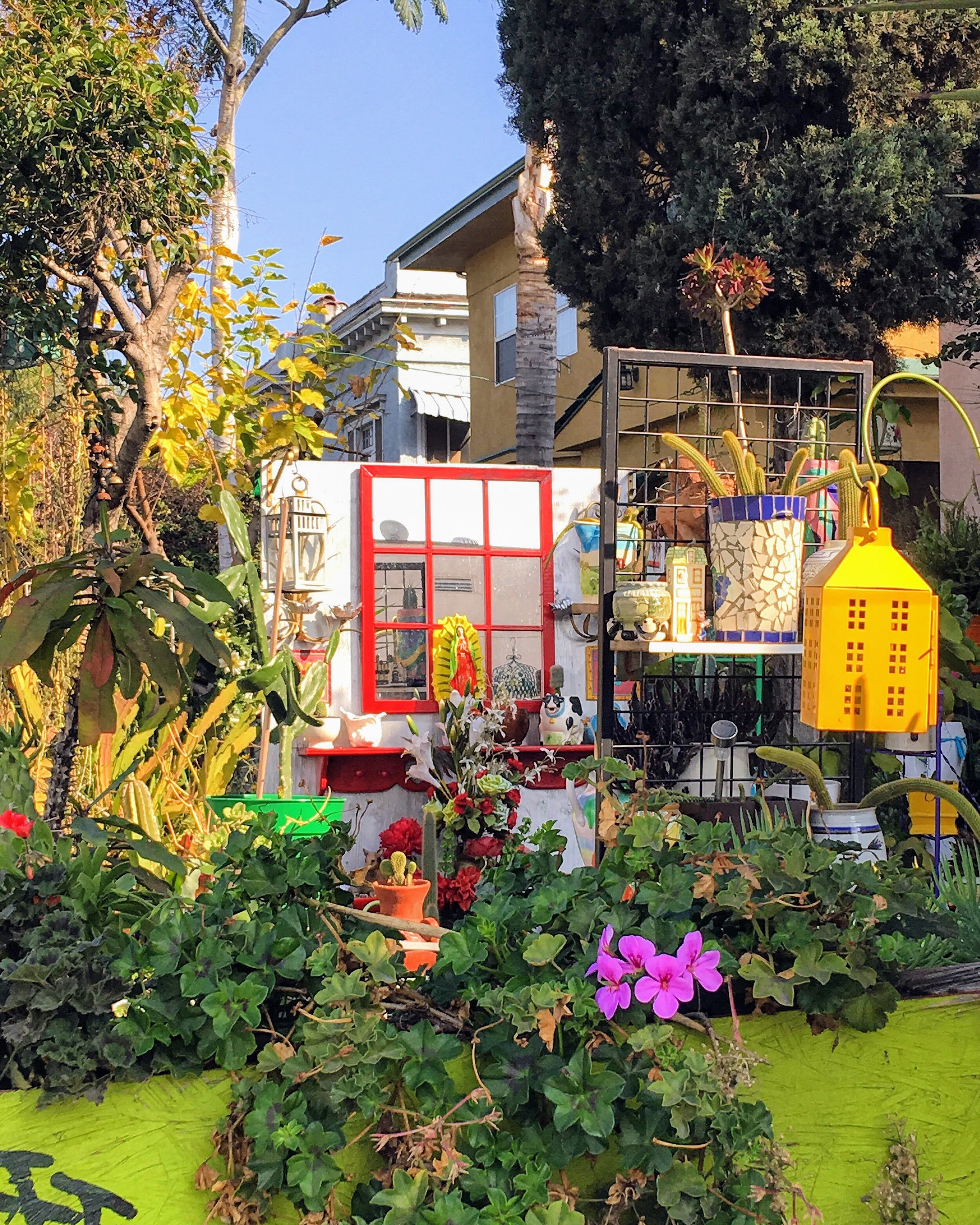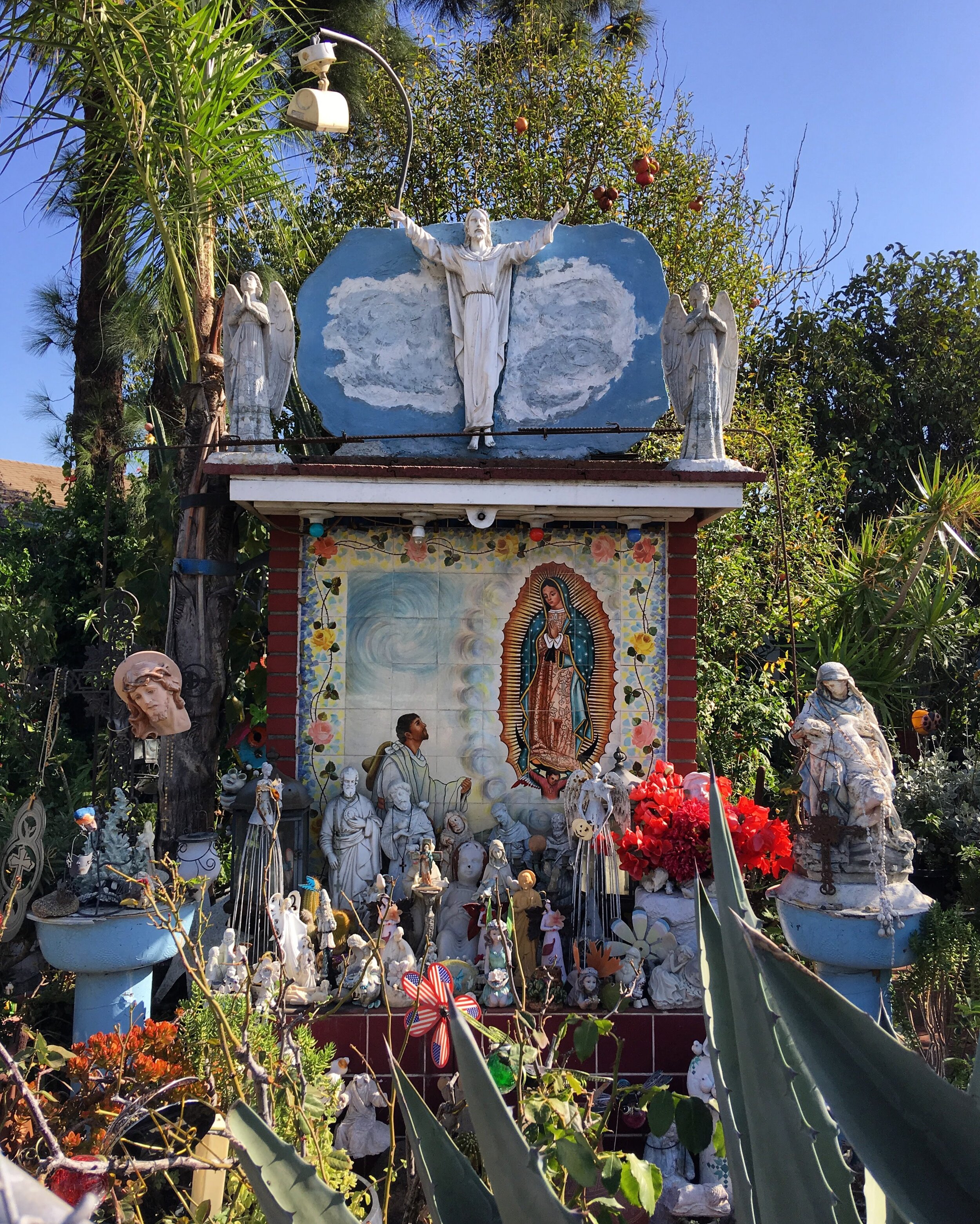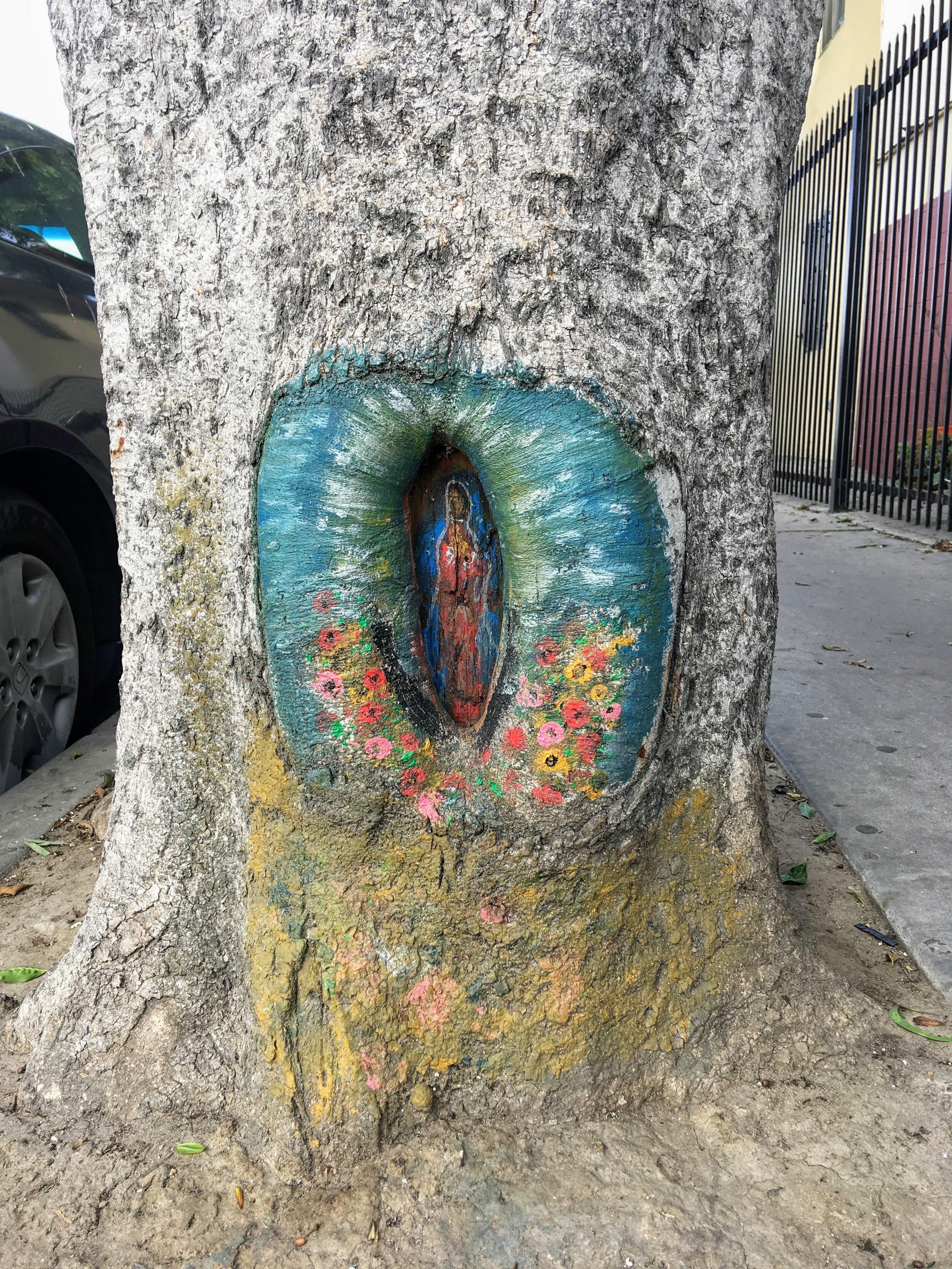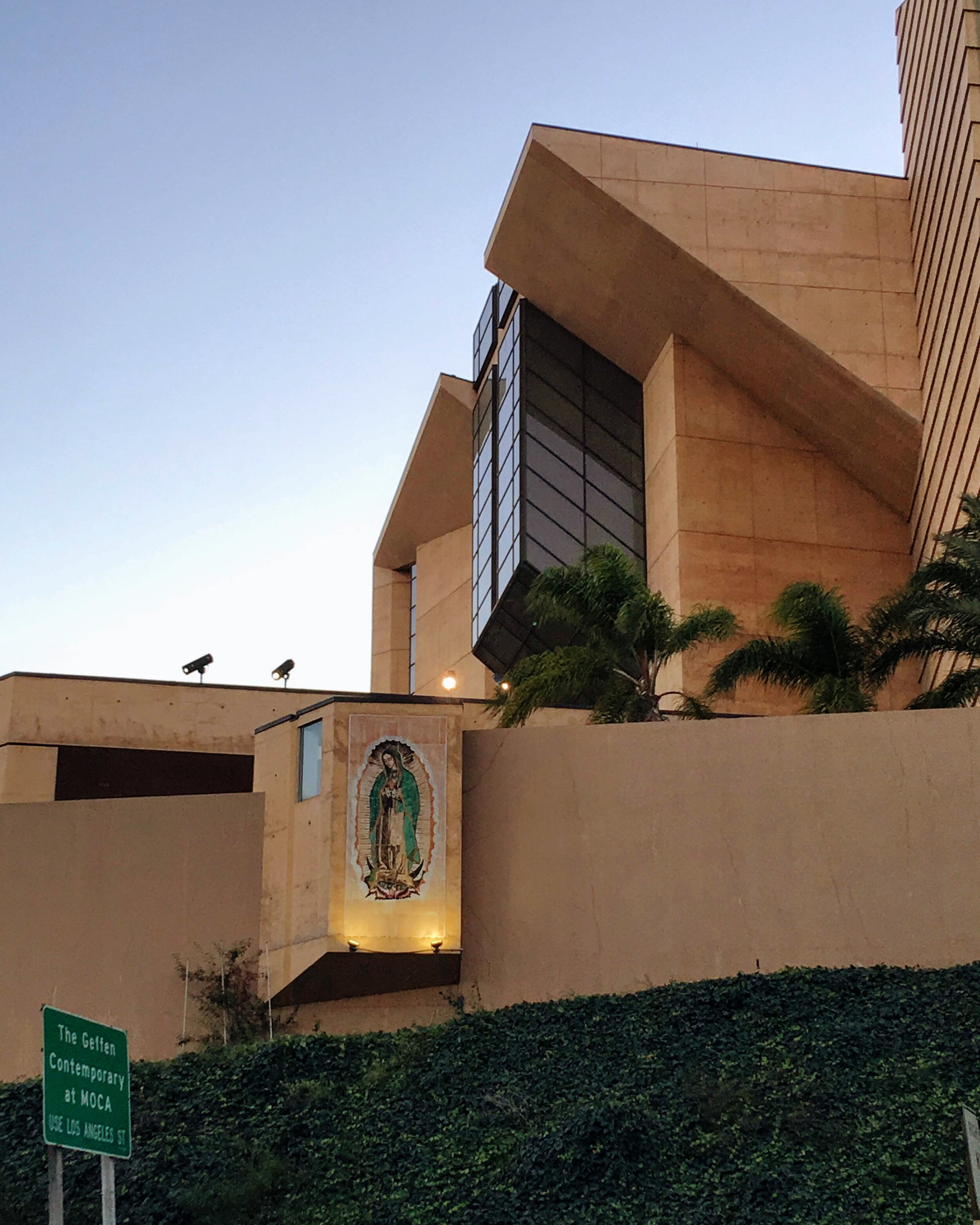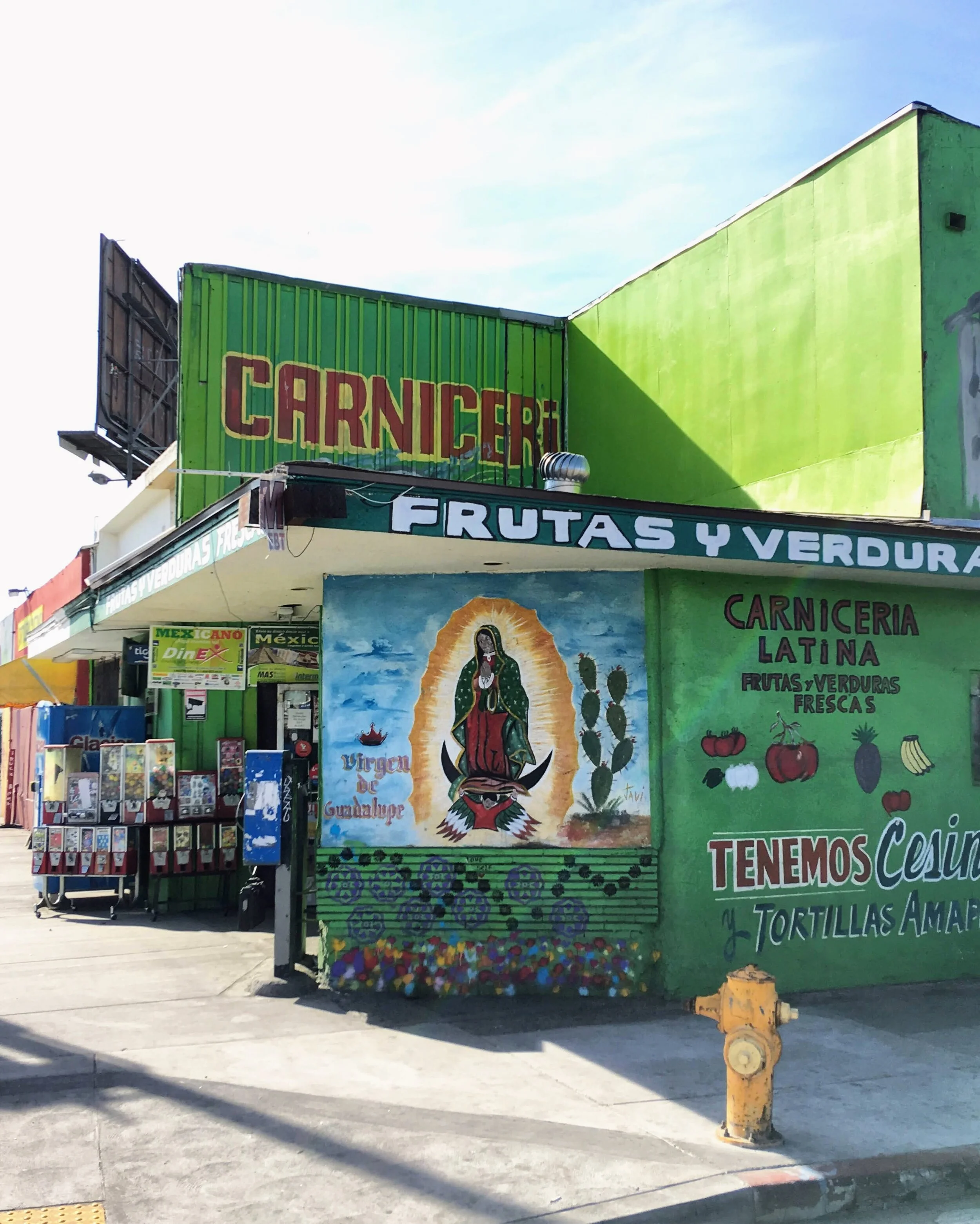Nydya Mora of Virgens de Los Angeles Uses Photography to Combat Cultural Erasure Amid Gentrification in L.A.
Meet Nydya Mora, a native Angeleno who documents the murals and shrines of the Virgen de Guadalupe all over Los Angeles and publishes them on her Instagram page, Virgens de Los Angeles. A current graduate student studying library and information science, Mora utilizes her professional experience in her process of archiving the culture of Latinx communities in L.A. as represented through these Virgen dedications.
Residing in the southeast region of L.A. County in the city of Paramount, Nydya frequents nearby cities like Compton and Long Beach to photograph and document images of the Virgen de Guadalupe all over the greater Los Angeles area. Read on for our discussion on Nydya’s heritage which inspired this project, the pride she has for her home city, and the urgent need to combat cultural erasure amid gentrification, particularly in the Latinx communities of L.A.
Courtesy of Nydya Mora
Hi Nydya! Can you discuss your background and how you got into documenting the Virgens painted all over L.A.?
I document murals and shrines of the Virgen de Guadalupe all over L.A. County. I informally began this project in 2012 and started taking pictures here and there after I encountered a beautiful mural. I began taking this project more seriously when I started noticing the harmful effects of gentrification in our Latinx communities.
What inspired you to start this project and share it in the public arena?
Growing up in L.A., Virgen de Guadalupe murals and shrines could be found anywhere you looked. I grew fascinated by their originality and the creativity she inspires that make each image so unique. I decided to start documenting these for my mother to show my appreciation for our culture. Although I do not consider myself a religious person, I have a lot of pride and reverence for my culture: a culture rooted in Mexico and manifested in artistic expressions of devotion in the streets of L.A.
Courtesy of Nydya Mora
That is so beautiful! Why did you choose Instagram as your medium over other platforms?
Being that this is a photography project, Instagram was the ideal platform. It’s a very functional application that also allows me to document and aggregate my photographs with geotags and descriptor tags. Aside from its utility, Instagram has enabled me to share my project with others and the virtual community that has sprouted out of that is a beautiful thing.
““This project is my love letter to L.A. and I think that people’s love for our city and our culture here runs deep... these images represent our culture, our communities, and who we are. We have a lot to be proud of. We are a metropolis of the world and our cultural depth and love for our city is profound. “”
For sure! What has been the most surprising thing that’s happened since the launch of this project?
The amount of support and encouragement I have received from everyone was something I never expected when I began this project. I believe this project has received such positive attention because these images reflect our identity. This project is my love letter to L.A. and I think that people’s love for our city and our culture here runs deep. When people see these images of the Virgen de Guadalupe, they don’t only see a religious symbol; these images represent our culture, our communities, and who we are. We have a lot to be proud of. We are a metropolis of the world and our cultural depth and love for our city is profound.
Your project is a wonderful way to capture social history, or “bottom-up” history, which may not necessarily come across in academic surveys or studies conducted in archives or with documents. Do you view your work as contributing to a body of the social and cultural history of Los Angeles, particularly with its Latinx citizens?
I do. In a society where everything is expendable and favors profit over all, I think it’s critically important to document the culture that is here. This project is a way of expressing that our culture is beautiful and has value.
Courtesy of Nydya Mora
And that is incredibly important work, now more than ever! What has been the most challenging issue you’ve faced as the documentor and curator behind Virgens de Los Angeles?
I think a big challenge as someone that documents the culture here is witnessing the damaging effects gentrification has had on the community. The real threat of cultural erasure in L.A. County continues to be the driving force of this project. My intention is to capture the culture and the creativity that exists in these neighborhoods that are witnessing significant demographic changes and are under threat of displacement due to policies that favor luxury developments and allow for egregious rent increases. COVID-19 has only exacerbated the issue of displacement and added a layer of urgency to this project due to the damaging effects it has on the Latinx community. As the pandemic disproportionately affects the Latinx community, I feel compelled, now more than ever, to continue to preserve and document the culture, my culture, that is here.
Courtesy of Nydya Mora
Gentrification and the erasure of culture in Los Angeles is a threat to cultural preservation everywhere. Your work is so admirable in its bold stance against this said cultural erasure, in visually solidifying this cultural presence that cannot just be wiped away without unraveling the very fabric of what makes L.A., well, L.A. In doing all this incredibly important work, has there been one specific accomplishment that has stood out to you?
This is a big question I don’t really know how to answer. As someone working within a society that is far from perfect with systems that enable the hoarding of resources, wealth, and power, I’m constantly thinking about how I can work towards uplifting and empowering those who are most affected by these disparities. There’s so much work to be done, but I think educating myself and finding ways to help address these inequalities are accomplishments I’m working towards.
Do you have any specific organizations or resources for readers to help communities in L.A. that are fighting gentrification?
Groups and organizations like From Lot to Spot, Inclusive Action, and UNIDAD are working to empower marginalized communities, but I encourage everyone to do their own research about what they are passionate about and get involved. During these unprecedented times, our communities need immediate relief and local food banks are always in need of volunteers. There are a ton of local groups and organizations doing great things in our communities, we just have to reach out and get involved in whatever capacity we can.
Courtesy of Nydya Mora
There is so much work to be done, and we should all work towards educating ourselves and continuing to consciously make efforts towards social betterment. Nydya, any exciting things coming up soon that we should look out for?
December 12th is El Día de La Virgen de Guadalupe and I want to do something special. I’m thinking of putting out a zine. Zines are fun and awesome DIY works of self-expression that are typically self-published and non-commercial. They can serve as powerful outlets for content sharing and self-expression because their content may be written, drawn, printed, collaged or any other creative combinations of words and imagery. Anyone can create zines and that’s what I love about them. If I do create a zine for El Día de La Virgen de Guadalupe, a portion of the proceeds made will go to a local organization doing important work in and with our LA communities; one that works from the ground up that empowers and strengthens our communities one way or another. I have a few in mind but will choose one once I do a bit more research and plans are solidified. A more long-term goal would be to eventually put out a book with the photos I have taken. 2021 perhaps? Probably.
Thank you so much to Nydya for the incredible and informative discussion on her photography project and how we can all work towards combating issues of wealth disparity, gentrification, and cultural erasure. We will certainly keep an eye out for a zine and hopefully a book of photographs! In the meantime, be sure to follow Virgens de Los Angeles on Instagram to fill your feed with beautiful pieces of Los Angeles’s identity and look into the organizations mentioned above to help communities suffering from gentrifying forces and the pandemic!





